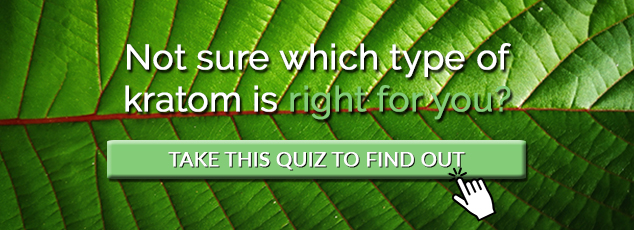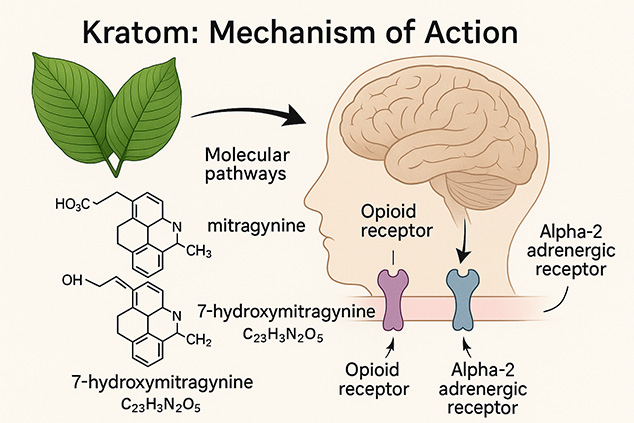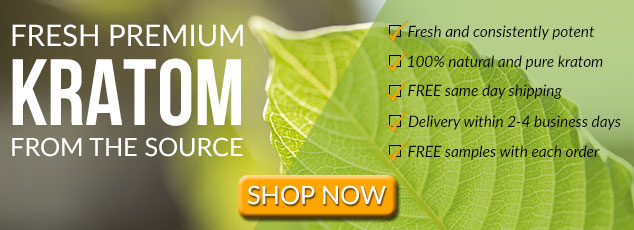As the popularity of kratom increases, it keeps amassing a controversial reputation. Some swear by it stating that it has saved their lives. Others arduously advocate against it trying to ban it.
One thing is certain – if you know about kratom, you most likely aren’t indifferent to it.
But how is that possible? How does a single plant cause such opposing viewpoints? How does kratom work? Let’s take a look at a few facts on kratom and find out what’s behind this controversy.
What Is Kratom?
Kratom or Mitragyna speciosa is a plant indigenous to Southeast Asian countries such as Indonesia, Malaysia, Brunei, Myanmar, Thailand, and Papua New Guinea. It’s also from the coffee, Rubiaceae, family.
For centuries, Southeast Asian natives have been chewing its leaves to keep their energy levels high while working in the fields. Or, they have been brewing kratom to manage pain as well as treat a variety of ailments such and coughs, gastric problems, and diarrhea.
Since kratom comes from the coffee family, the latter may not make much sense. Taking coffee to treat diarrhea may not get you very far.
But that’s what makes kratom unique. It’s powerful properties and versatility of use.
Kratom Effects and Benefits
While differences apply when it comes to different kratom veins and strains, kratom dosage largely determines its effects. In smaller doses kratom has stimulating effects, while in larger doses it’s relaxing. Kratom also has pain relieving and euphoric effects regardless of the dose you take.
Because of these versatile properties people taking kratom to help with a variety of conditions such as:
- anxiety,
- depression,
- different kinds of pain,
- difficulty concentrating,
- lack of energy,
- low mood,
- sleep issues,
- stress,
- and much more.
Kratom Alkaloids
Kratom owes its properties to kratom alkaloids, compounds that have powerful medicinal properties. These range from pain management to fighting inflammation and more.
Kratom leaves contain a high concentration of alkaloids. According to the data available at the moment, there are 40 different compounds in kratom. 25 of them are alkaloids. However, these numbers may even be higher as we only have limited information on kratom available.
Most alkaloids are found in small quantities. This by no means signifies that they are not potent. Quite the contrary. Nonetheless, two of these alkaloids are more abundant than others. These are mitragynine and 7-hydroxymitragynine.
Mitragynine makes up around 60% of all alkaloid content in kratom, while 7-hydroxymitragynine accounts to around 2%. Yet, their exact concentration varies per each individual strain.
Mitragynine is responsible for kratom’s stimulating effects. Thus, you are more likely to find a higher concentration of it in the green and whites strains, for instance, in Green Maeng Da.
Meanwhile, 7-hydroxymitragynine may be less prevalent in kratom, but it’s much more potent. It causes kratom’s relaxing and sedative properties. Thus, it is the most abundant in the red strains like Red Bali.
The FDA lists kratom as a “Drug of Concern” and refers to it as an opioid. States and cities that ban kratom most often list in under Schedule I synthetic drugs or opioids.
Due to kratom’s controversial nature, studies have been done by a group of researchers to make sure kratom remains legal. It’s known as the Kratom 8-Factor Analysis. It has proven the FDA claims inaccurate.

So, How Does Kratom Work?
Just like alkaloids in coffee, those found in kratom also affect the human brain. Mitragynine binds with mu opioid receptors in the brain. These are receptors that are responsible for drug addictions as they mediate positive reinforcement.
But, not so fast! This does not automatically mean that kratom is an addicting drug. Things are a little more complicated than that. So, keep reading!
When a person responds to certain stimuli such as a piece of chocolate cake, winning in a computer game, or getting praised, that activates the reward circuits in their brain. That, in turn, produces dopamine, one of the feel-good hormones. The more often this person reinforces that same action and activates reward circuitry, the stronger these connections in the brain become.
As a result, this person starts craving these stimuli in order to feel good. And the stronger these connections, they more the person craves that what is giving them this satisfaction.
But that’s not all there is to it when it comes to kratom and drug addiction though. Same as craving chocolate is not nearly the same as being addicted to drugs.
There’s also a protein called beta-arrestin 2.
Beta-arrestin 2 is the one that is responsible for mediating behavioral effects of drugs. When it’s activated, addictive behaviors form.
Research shows that kratom does bind with the same receptors as opioids and helps our brain produce dopamine that, in turn, helps manage pain better. However, in contrast with drugs it does not recruit the beta-arrestin 2 protein. As a result, it does not get activated.
So, humans simply experience analgesic effects without forming an addictive behavior.
Because of this, kratom does not have the touted abuse potential. In fact, it’s about as addictive as coffee. Alter all, kratom and coffee are cousins.
Kratom also causes significantly lower respiratory depression.
When it comes to stimulating effects, kratom alkaloids activate receptors responsible for adrenalin and block those responsible for serotonin. Thus, the boost of adrenalin and lower levels of serotonin help us to stay alert.
How Long Does Kratom Stay in Your System?
The effects of kratom last for several hours. Depending on the kratom dosage and the strain it could be anywhere from 2-8 hours for kratom effects to wear off by half. This is kratom half-life. However, the average is usually around 4-5 hours.
Nonetheless, kratom does not completely leave the body during this time. It takes around 24 hours for your body to completely eliminate it, yet trace amounts of it remain in your system for up to 7 days.
More Research on Kratom Needed
Yet, due to limited research currently available on kratom, the information we know about kratom may yet be only the tip of the iceberg.
In late 2018, the National Institute of Drug Abuse (NIDA) granted $3.5 million to US College of Pharmacy for 2-year kratom research. Hopefully, this gives us more insight into the effects and benefits of kratom and helps keep kratom legal.
Have you read any interesting facts on kratom recently? Feel free to share those with us and other kratom enthusiasts!



Leave a Reply